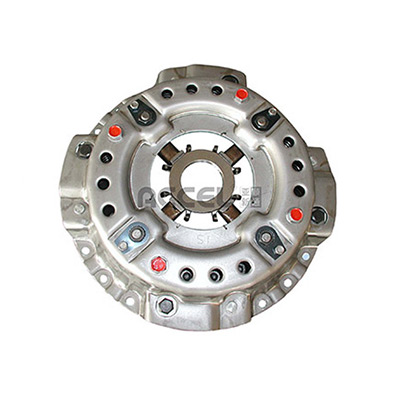- Arabic
- French
- Russian
- Spanish
- Portuguese
- Turkish
- Armenian
- English
- Albanian
- Amharic
- Azerbaijani
- Basque
- Belarusian
- Bengali
- Bosnian
- Bulgarian
- Catalan
- Cebuano
- Corsican
- Croatian
- Czech
- Danish
- Dutch
- Afrikaans
- Esperanto
- Estonian
- Finnish
- Frisian
- Galician
- Georgian
- German
- Greek
- Gujarati
- Haitian Creole
- hausa
- hawaiian
- Hebrew
- Hindi
- Miao
- Hungarian
- Icelandic
- igbo
- Indonesian
- irish
- Italian
- Japanese
- Javanese
- Kannada
- kazakh
- Khmer
- Rwandese
- Korean
- Kurdish
- Kyrgyz
- Lao
- Latin
- Latvian
- Lithuanian
- Luxembourgish
- Macedonian
- Malgashi
- Malay
- Malayalam
- Maltese
- Maori
- Marathi
- Mongolian
- Myanmar
- Nepali
- Norwegian
- Norwegian
- Occitan
- Pashto
- Persian
- Polish
- Punjabi
- Romanian
- Samoan
- Scottish Gaelic
- Serbian
- Sesotho
- Shona
- Sindhi
- Sinhala
- Slovak
- Slovenian
- Somali
- Sundanese
- Swahili
- Swedish
- Tagalog
- Tajik
- Tamil
- Tatar
- Telugu
- Thai
- Turkmen
- Ukrainian
- Urdu
- Uighur
- Uzbek
- Vietnamese
- Welsh
- Bantu
- Yiddish
- Yoruba
- Zulu
Lis . 10, 2024 19:25 Back to list
Understanding the Importance of Camshaft Drive Belts in Engine Performance and Maintenance
Understanding Camshaft Drive Belts An Essential Component of Your Engine
The camshaft drive belt, often simply referred to as the timing belt, is a crucial component in the engine of many vehicles. Its primary function is to synchronize the rotation of the crankshaft and the camshaft. This synchronization allows the engine's valves to open and close at the appropriate times during the engine's operation. While this may sound straightforward, the timing belt plays a vital role in the overall performance and efficiency of your engine.
Importance of the Camshaft Drive Belt
The camshaft drive belt is typically constructed from reinforced rubber, designed to withstand the high temperatures and stress of the engine environment. Over time, however, these belts can wear out or become damaged, leading to various potential issues. If a timing belt breaks, it can cause severe engine damage, particularly in interference engines, where the pistons and valves occupy the same space. Therefore, regular inspection and timely replacement of the camshaft drive belt are essential to maintaining engine health.
Indications of a Failing Timing Belt
It’s important for vehicle owners to be aware of the warning signs indicating that a camshaft drive belt might need replacement. Common symptoms include
1. Unusual Noises A failing timing belt may produce a high-pitched whirring or squealing sound, which could signal that the belt is beginning to wear. 2. Engine Misfires If the belt is not properly synchronizing the crankshaft and camshaft, the engine can misfire or run poorly.
3. Oil Leaks Oil leaks from the front of the engine may indicate a problem with the timing cover or its seals, potentially affecting the timing belt.
camshaft drive belt

4. Check Engine Light A warning light on your dashboard could illuminate due to various issues related to the timing system.
5. Harsh Engine Performance A noticeable decline in engine performance may also suggest that the timing belt is no longer functioning as it should.
Maintenance and Replacement
Given the potential risks associated with a broken timing belt, maintenance is key. Most manufacturers recommend replacing the timing belt every 60,000 to 100,000 miles, but this can vary based on the make and model of your vehicle. It’s wise to consult your owner's manual for specific recommendations regarding your vehicle.
When replacing the camshaft drive belt, it is often a good idea to replace related components such as the water pump, tensioners, and idler pulleys. These parts are usually accessible during the timing belt replacement, and replacing them can save significant time and money down the line.
Conclusion
The camshaft drive belt is an unsung hero of automotive engineering. Its role in ensuring that the engine operates smoothly and efficiently cannot be overstated. For vehicle owners, understanding the importance of this component, recognizing the signs of wear, and adhering to maintenance schedules is crucial. By taking proactive measures—such as regular inspections and timely replacements—you can help prevent costly repairs and ensure the longevity of your engine. Being informed and vigilant about the condition of your camshaft drive belt will not only enhance your vehicle's performance but also improve your overall driving experience.
-
Precise Timing Belt Operation: Function & FAQ Guide
NewsAug.10,2025
-
Precision Double-Sided Toothed Endless Flat Drive Belts
NewsAug.09,2025
-
Durable Tooth Belts: Precision Power for Poly V Belt Drives
NewsAug.08,2025
-
Reliable Diesel Engine Belts & Tensioners for Optimal Performance
NewsAug.07,2025
-
23100-KVB-901 Drive Belt for Honda VARIO | OEM Performance
NewsAug.06,2025
-
Variable Belt Drive AI Optimized for Efficiency
NewsAug.05,2025

